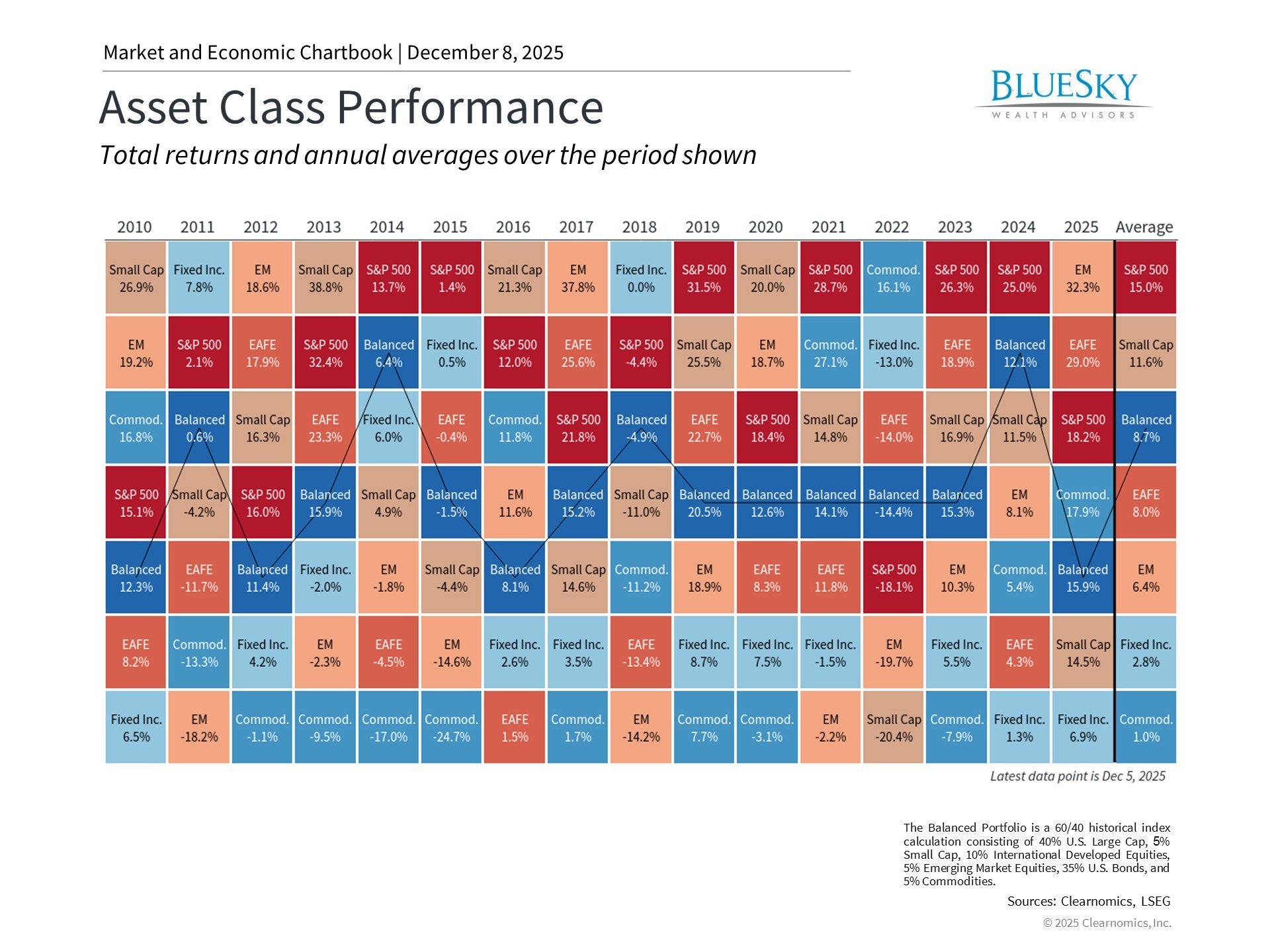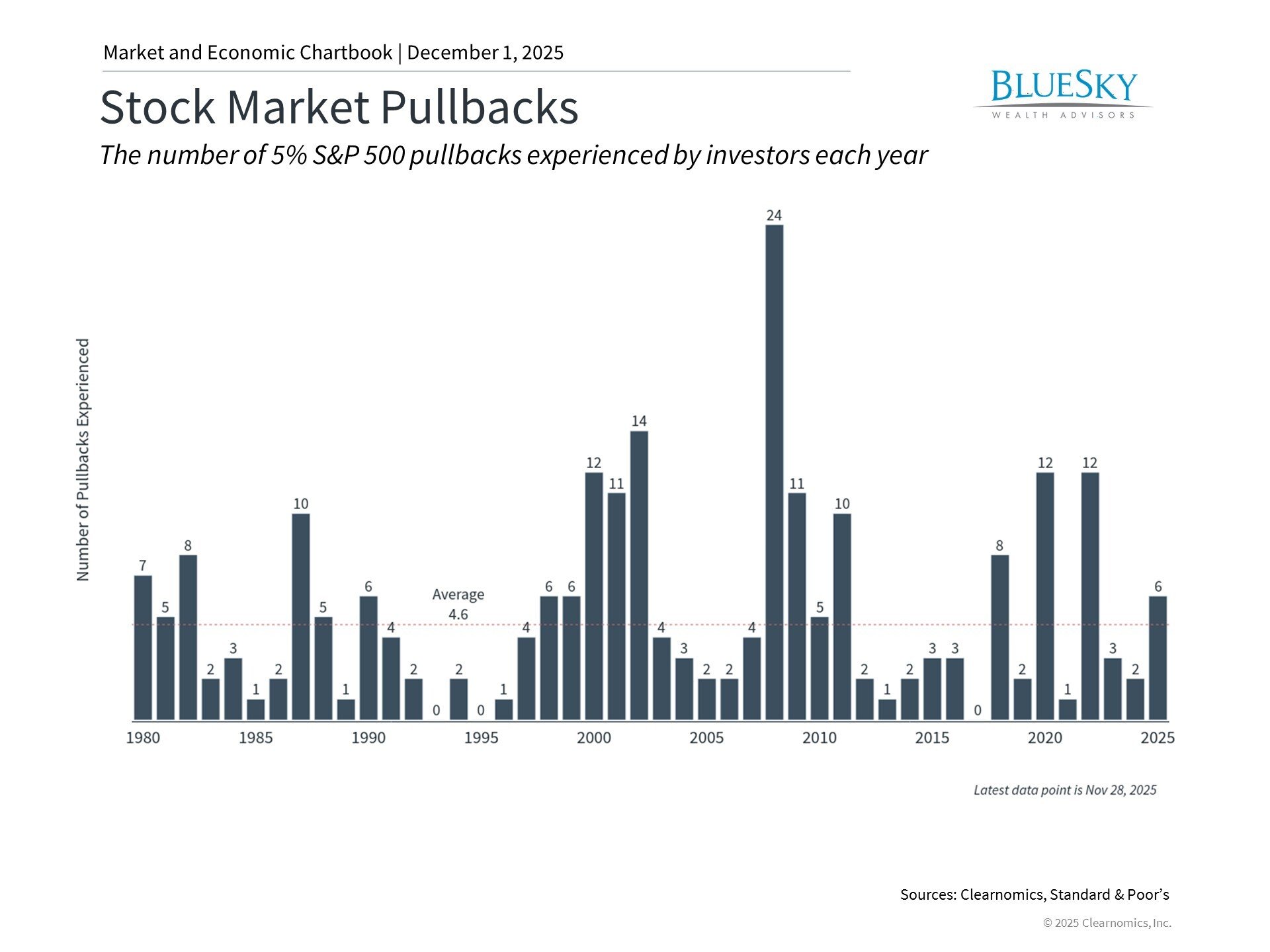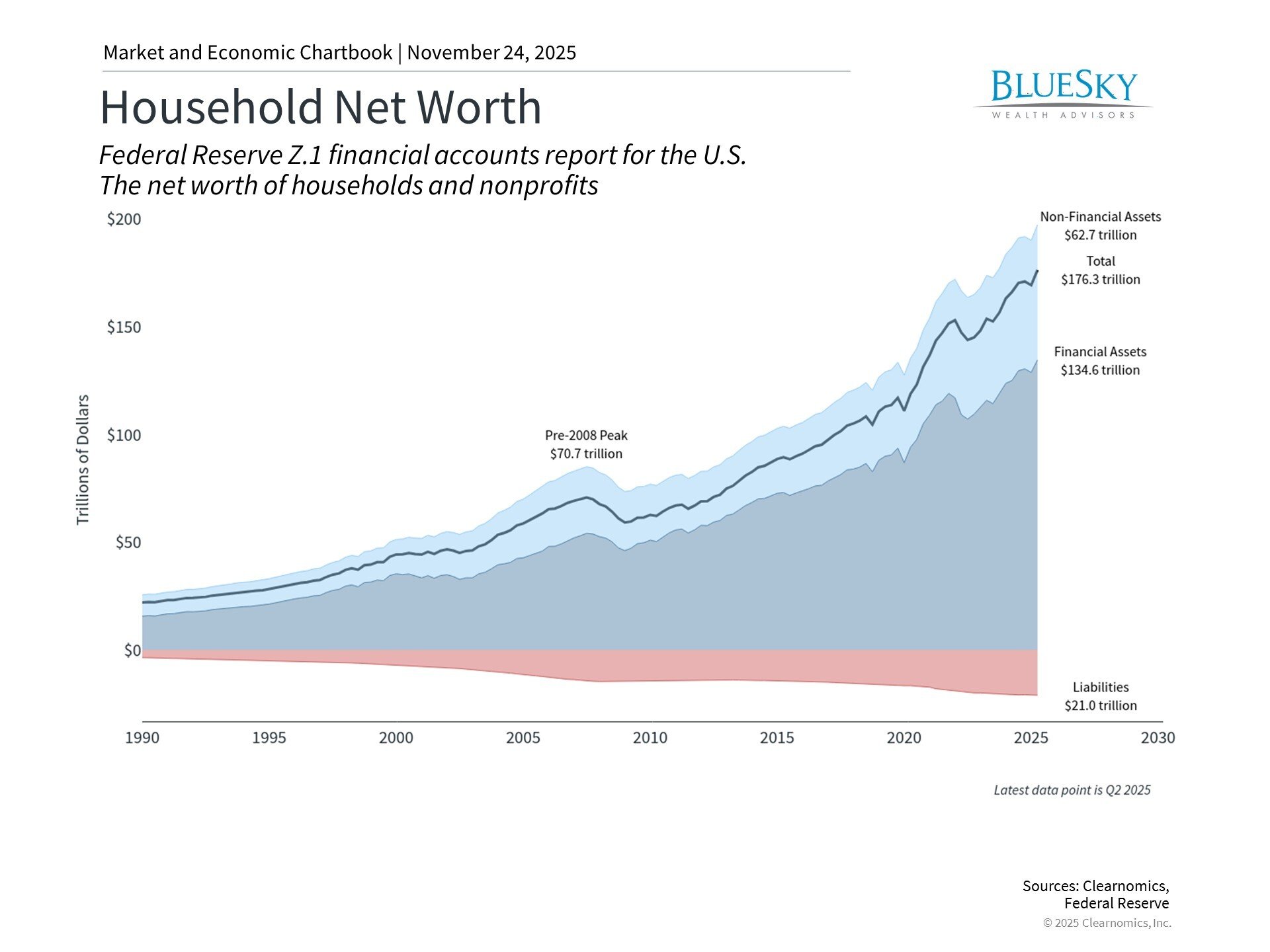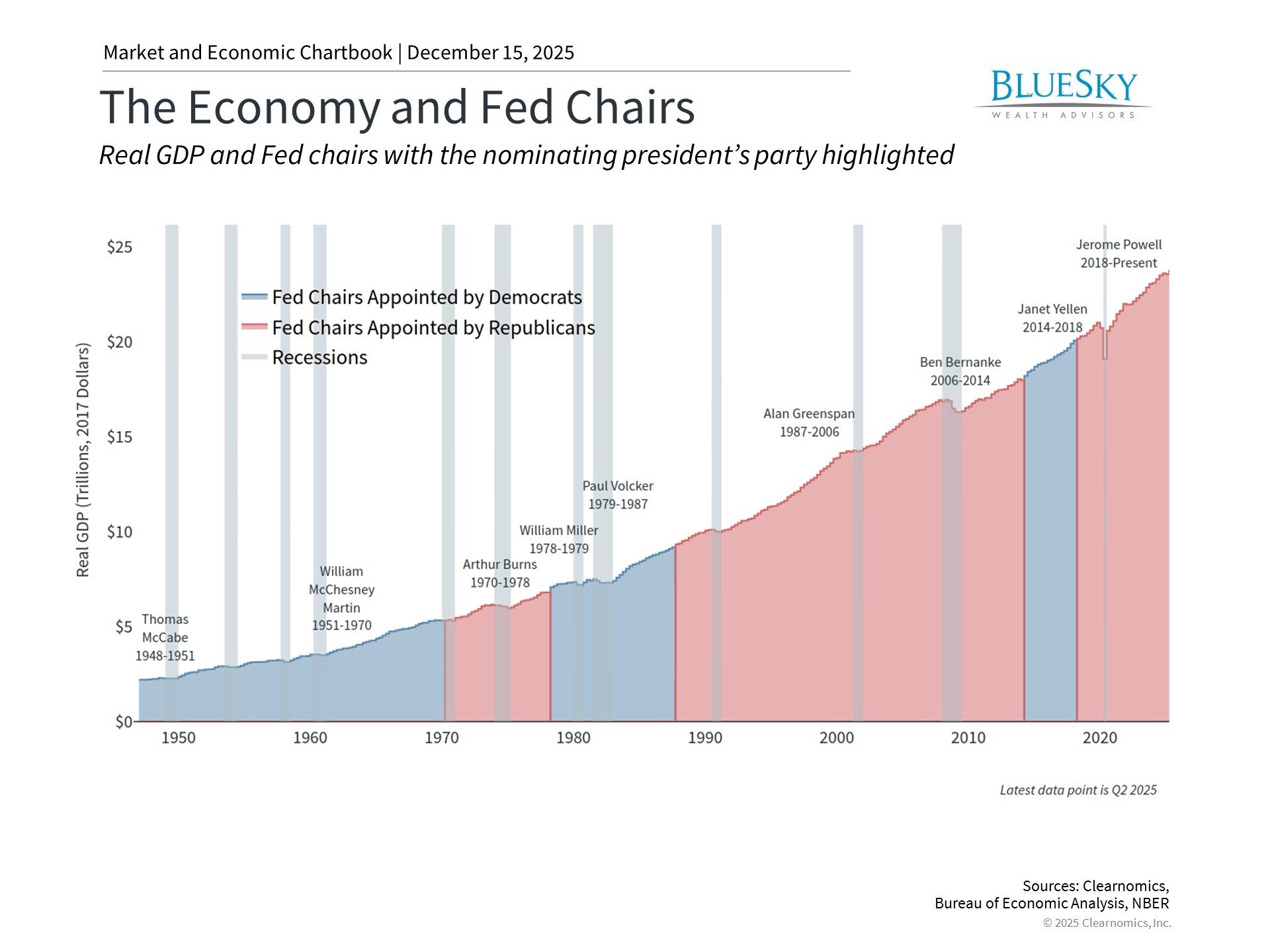
INTEREST RATES & FEDERAL RESERVE
INTEREST RATES & FEDERAL RESERVE
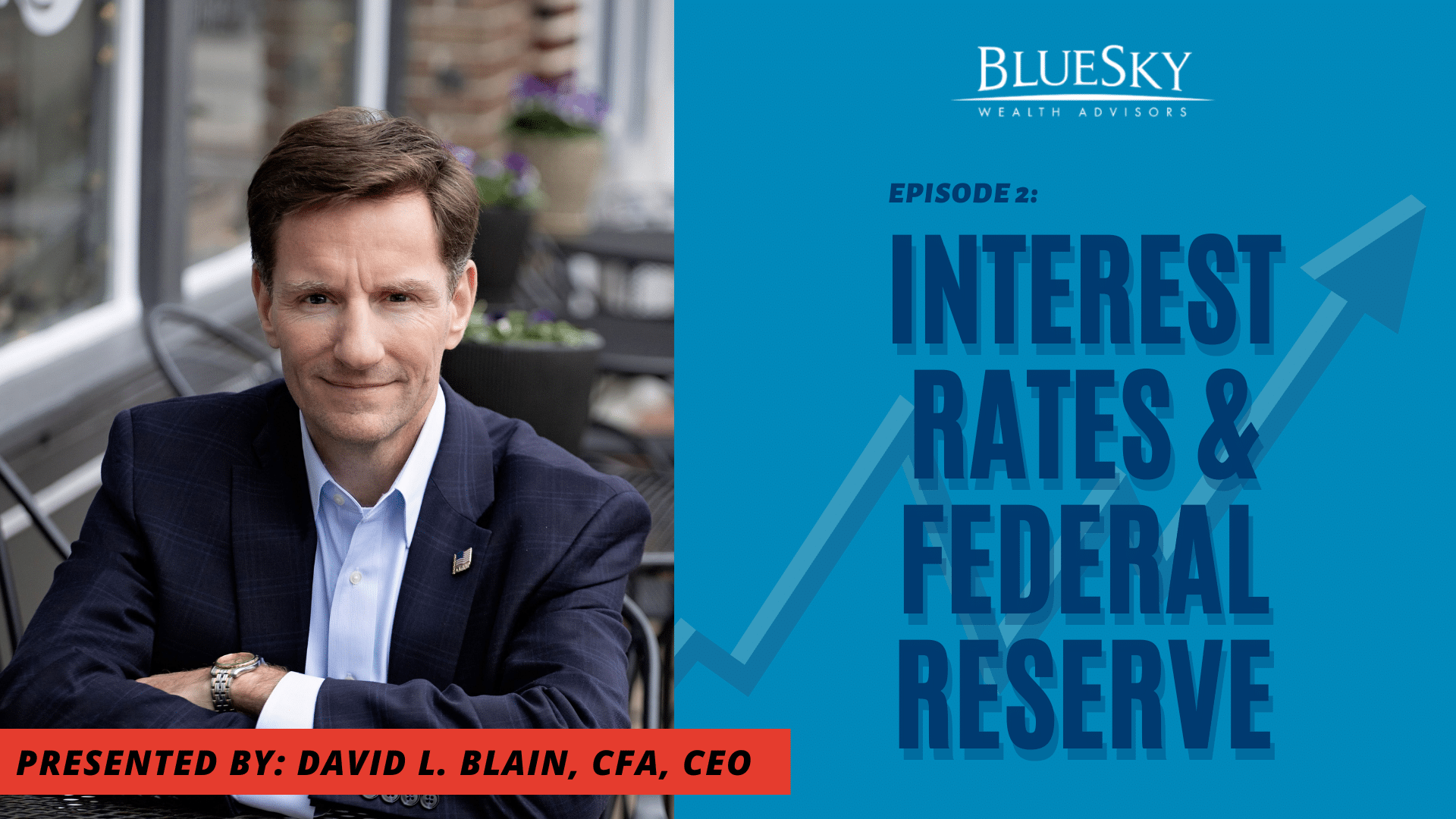
Introduction:
David L. Blain, CFA, is the Founder and CEO of BlueSky Wealth Advisors and the author of Invest In Your Life, Not Just Your Portfolio. David evaluates rising interest rates and the Federal Reserve. How will this impact your portfolio?
Transcript of Episode Two: Interest Rates & Federal Reserve
Okay, David Blain back here. We’re talking about what’s happening here in 2022 with the markets. If you missed my previous video I talked a little bit about one year returns for different asset classes, as well as shared a chart with you to try to put what’s happening today into perspective. What I want to do now is the Federal Reserve. For those of you that don’t know, or just need a refresher, the Federal Reserve is composed of the largest banks in the United States and they set the monetary policy for the U.S. The Federal Reserve, Jerome Powell, the Chairman is appointed by the President, and they derive the monetary policy of the United States. The Government sets the fiscal policy, meaning how much they spend and taxes and things like that. That’s fiscal policy. Monetary policy has to do with raising interest rates, money supply. Those type of things is called monetary policy.
So one of the most important things that the Federal Reserve does is set interest rates. They have a dual mandate to maintain inflation as well as to keep unemployment down. And sometimes those two can contradict each other. So they meet periodically and decide what to do with the interest rates. So they’re going to meet here again soon and the consensus is that they’re going to raise interest rates by another 75 basis points. That’s 0.75%, a little bit less than 1%. They talk in basis points. And so that they have to continue to raise rates to combat inflation, but also keep the people employed. They’re trying not to cause a recession.
So what I wanted to do was share with you today some history around these interest rate hikes and what to expect. Number one, which is really unusual about this one is that the bear market that we’re in now, the stock market, the bear market, minus 20% decline from a high. This is only the fourth time that a bear market has started before interest rate hikes. It’s very unusual. The bear market started before the Federal Reserve even started messing with interest rates. I would argue that the bear market that we had back in 2020 due to COVID probably should never have ended. We got through that bear market very quickly, but the economies were recovering, not quite as bad as COVID, but weren’t quite on solid footing. We had supply chain issues, things like that. So this is a continuation of some of the same problems.
Anyway, so only the fourth time where the bear market actually started before the Fed started raising rates. Usually the Fed starts raising rates and then the bear market comes along. Also, if you look at historically based on that fact, we’re probably not done with some of the pain, meaning the market will probably continue to go down more from here. How much, I don’t know. Only about 50% of bear markets go from that 20 to 30% stage, meaning half of bear markets fizzle out between 20 and 30% decline. Now we recovered a fair percentage of that 20% decline, so that who knows if this one will fizzle out or not, but there’s a good chance that we’ve seen a lot of the damage, but I don’t expect a huge recovery anytime soon.
There’s only been one time in history where when the Federal Reserve started raising interest rates, or tightening, it’s called tightening. They’re trying to shrink the growth of the economy to bring inflation down. There’s only been one case. It was back in 1994 that the Fed raised rates, but it didn’t lead to a bear market. So very unusual, typically bear markets, rising interest rates, go hand in hand.
On average, just looking at a couple of statistics here, on average the minus 17% during a Fed tightening cycle has been the typical bear market, it’s about 17%. So we’re a little bit over that. The full cycle from tightening to easing has been an average of minus 20%. So we’re still in that range of a normal bear market. And that’s what I look for. People say well, what do you look for? What I’m looking for is things that are unusual. We can’t stop it, but I think by understanding it is very helpful.
Back to my plane analogy for my first video. If the pilot comes on and says, “Hey, be prepared to expect turbulence. There’s turbulence in the air.” Well, you’re more prepared. It’s not quite a shock. But if he says nothing and all of a sudden the plane drops 1,000 feet, people’s drinks go flying everywhere, people fall into the aisle, it’s very unsettling. So that’s what we try to do here is so that people can understand what’s happening, understand what’s typical, what’s normal, so that it’s not quite such a shock. It doesn’t make it any more fun, just like it’s not fun on the plane to have turbulence, but it can help ease it a little bit.
So the average bear market during a Fed tightening cycle has been about 13, 14 months. From that perspective we have a little bit longer to go as well. You would expect this bear market to end somewhere in the beginning of next year. And by that I mean the decline is over and we begin to start a new bull market. So the election may accelerate that, it may exacerbate it, but if we’re looking at averages, somewhere in the beginning of next year would be a good timeframe. If it goes much beyond that we’ll know it’s much worse than normal. If it eases up before that we’ll know it was better than normal.
So one key thing is there’s only been one case where the bear market ended before the Feds started easing again. So you have tightening, where they’re raising interest rates. And usually they say oh my gosh, we did it too much. The economy’s tanking. There’s a recession. And so then they have to start cutting rates, which is called an easing cycle. So tightening, raising rates. Easing is lowering rates. And so basically what we want to look for is its too early, they’re still raising rates. They’re probably going to raise them at least two or three more times, but typically once you see the Fed stop raising rates and talk about easing rates again, that’s a good time, typically when the bear market’s going to end.
So just in summary, the Federal Reserve meeting again this week. It’s expected that they’re going to raise interest rates another 75 basis points. Most people are calling for the Federal Reserve to do that two more times. So this rate raise plus another one and a half percent. Most people think the Federal funds range is going to end up somewhere in the 5 to 6% range by the time the Fed is done tightening. Now we’re going to have to watch the inflation, if the inflation is coming down. We’re going to talk about inflation in the next video in detail, but for this one I just wanted to focus on what the Federal Reserve is doing and historically.
So historically, playing out just like normal Feds in a tightening cycle. The market’s in a bear market. Once they stop that tightening and we start talking about easing you should expect for a new bull market to form. Once again, historically looking at probably next year, early next year, hopefully for the bear market to be over. So like I mentioned, we’re going to split this video up. I’m going to end now talking about the Federal Reserve. The next one we’ll talk about is what’s going on with inflation. Is inflation going to end anytime soon? What are the signals out there that we can look at, besides the Federal Reserve for the direction that inflation is moving.

